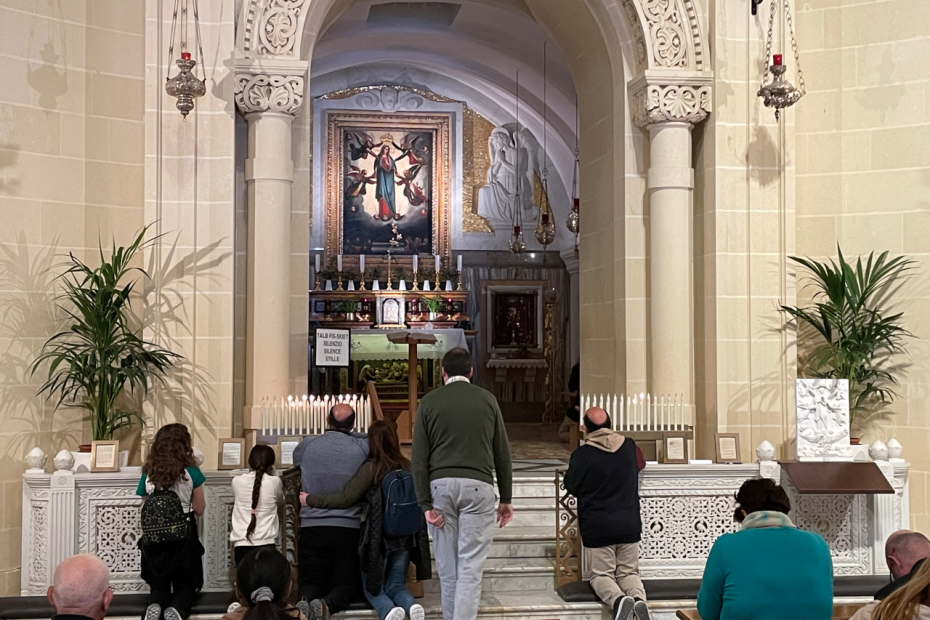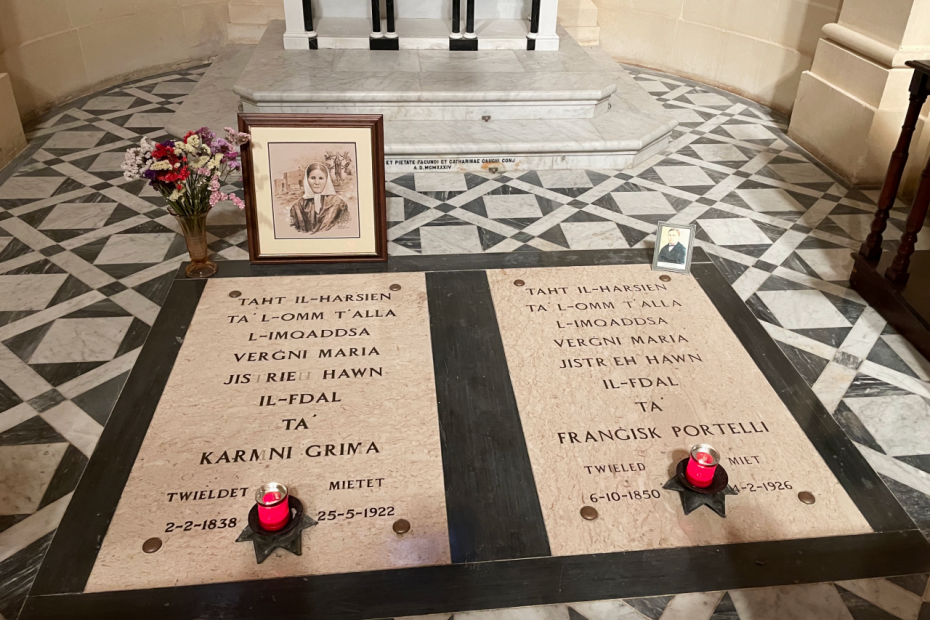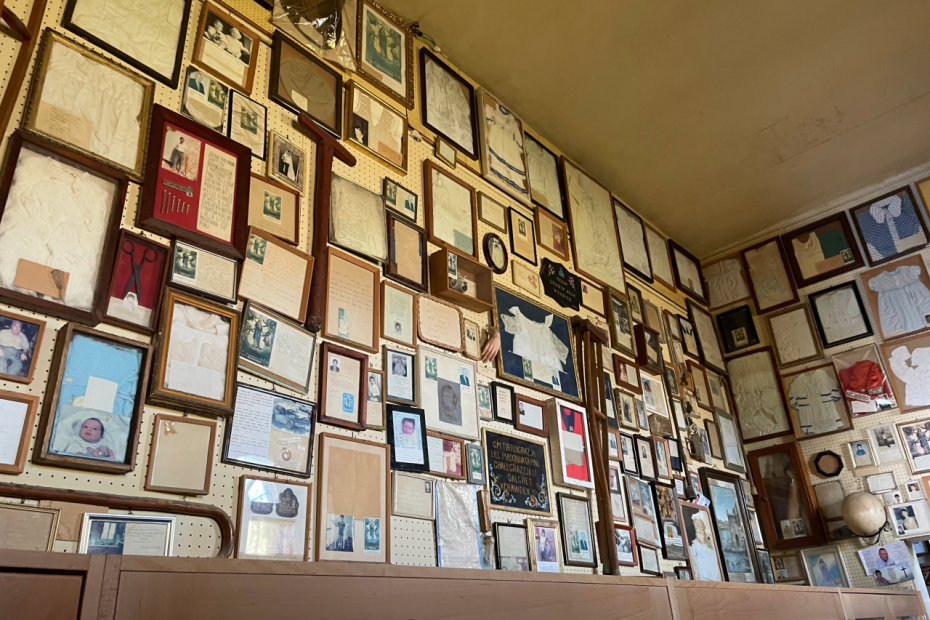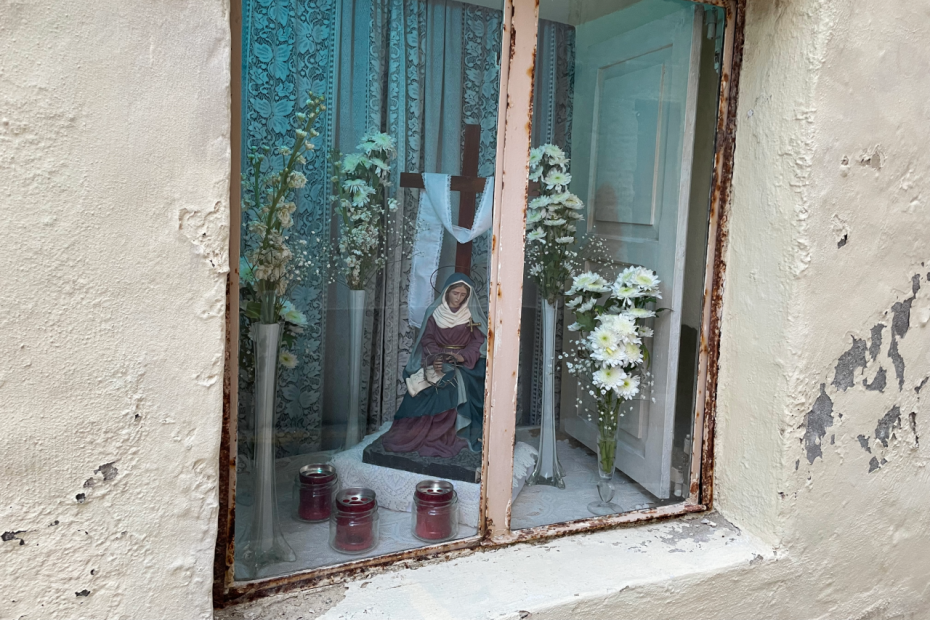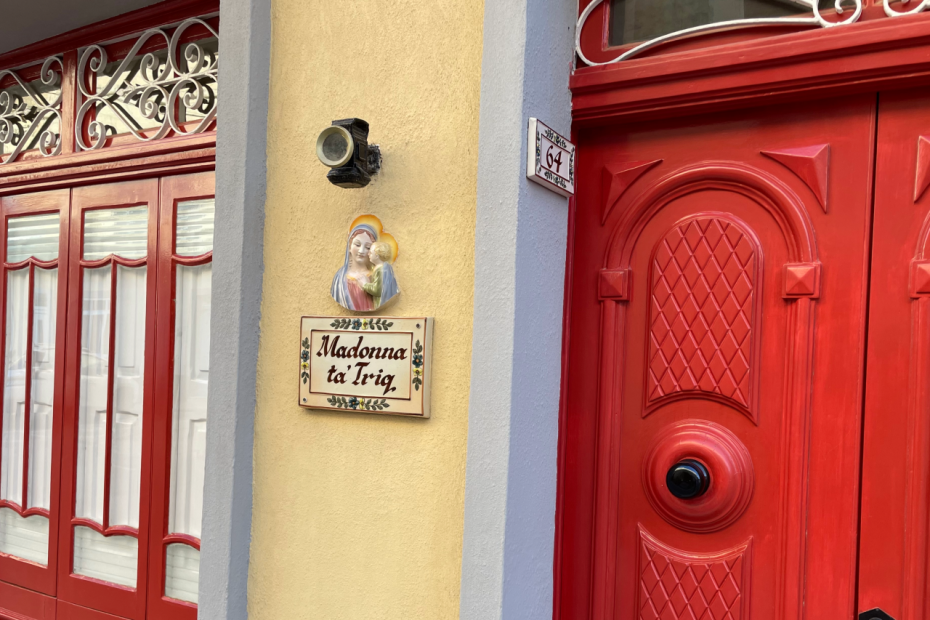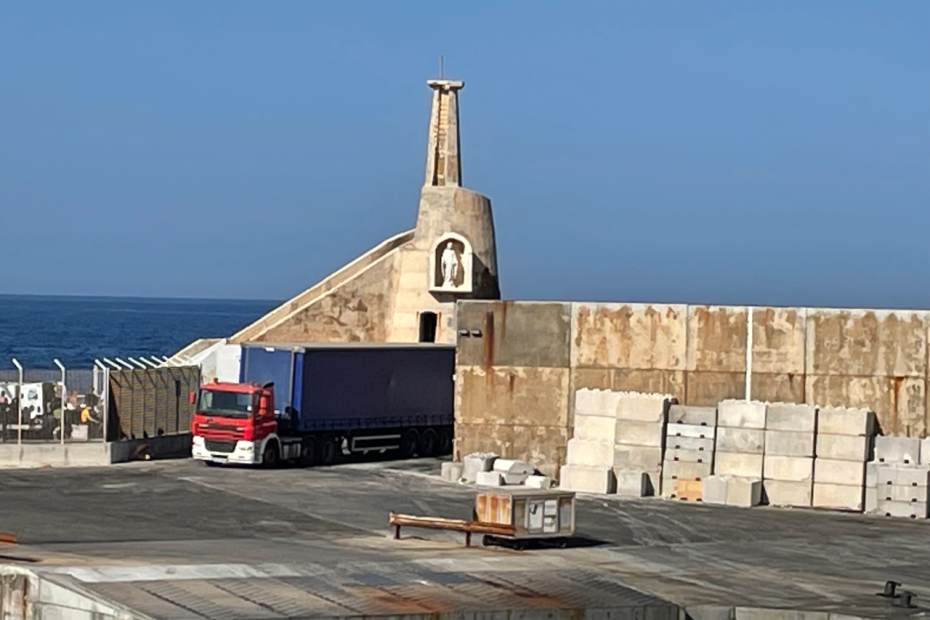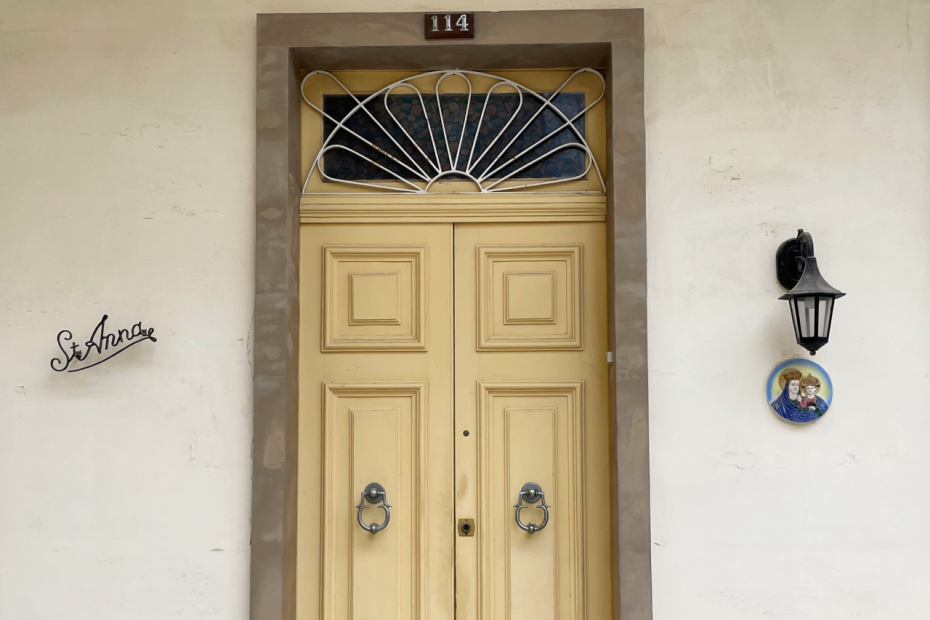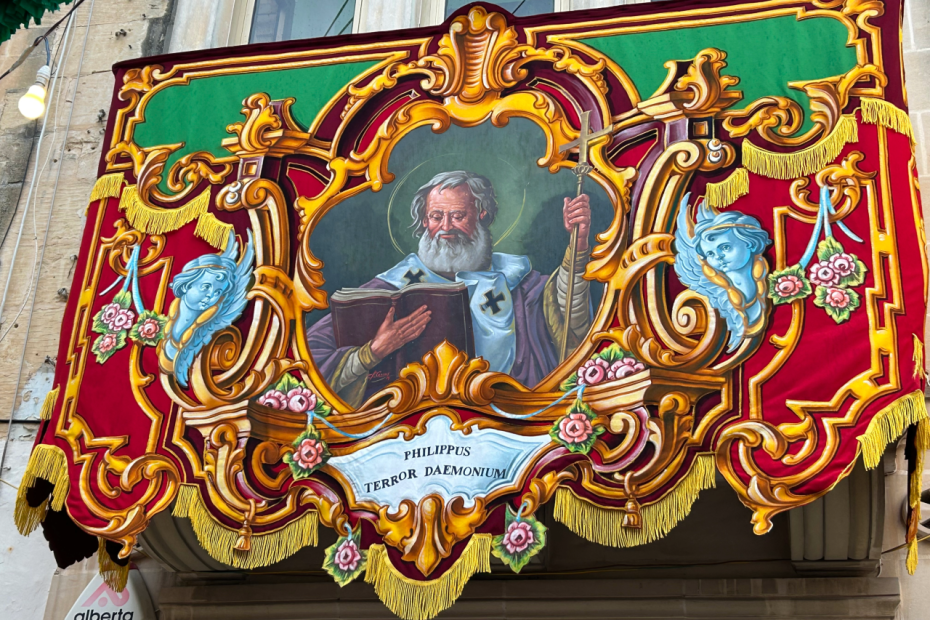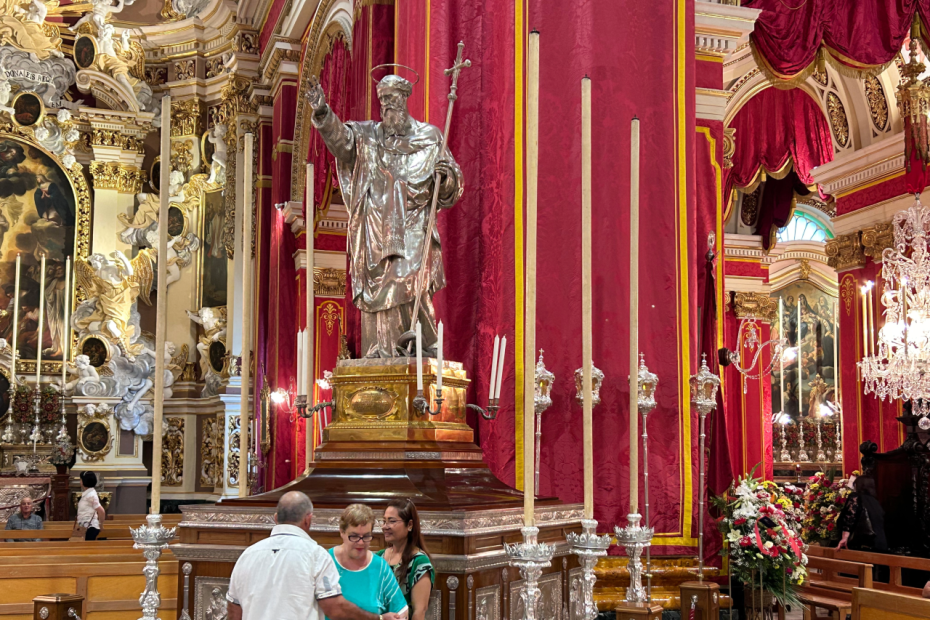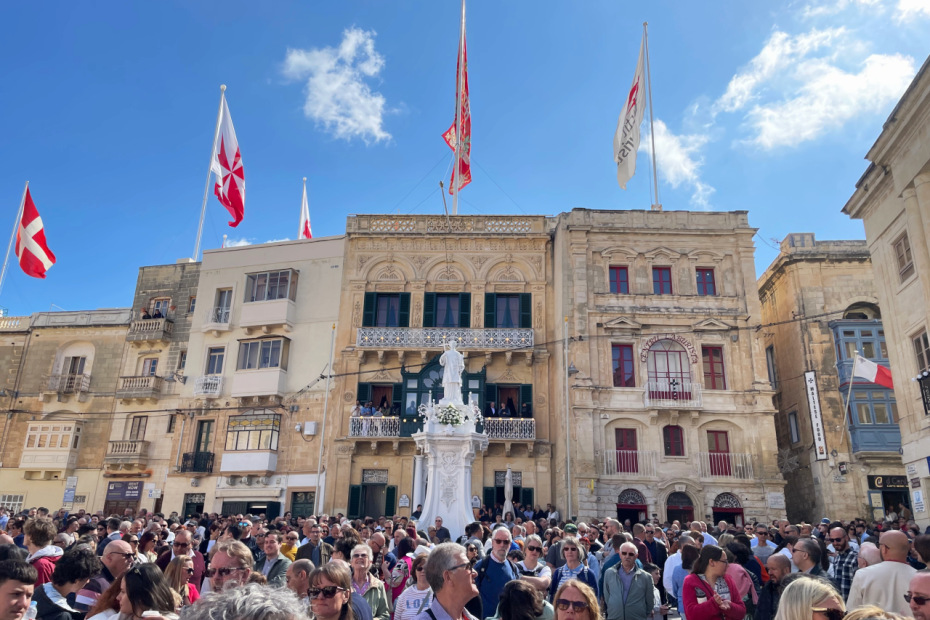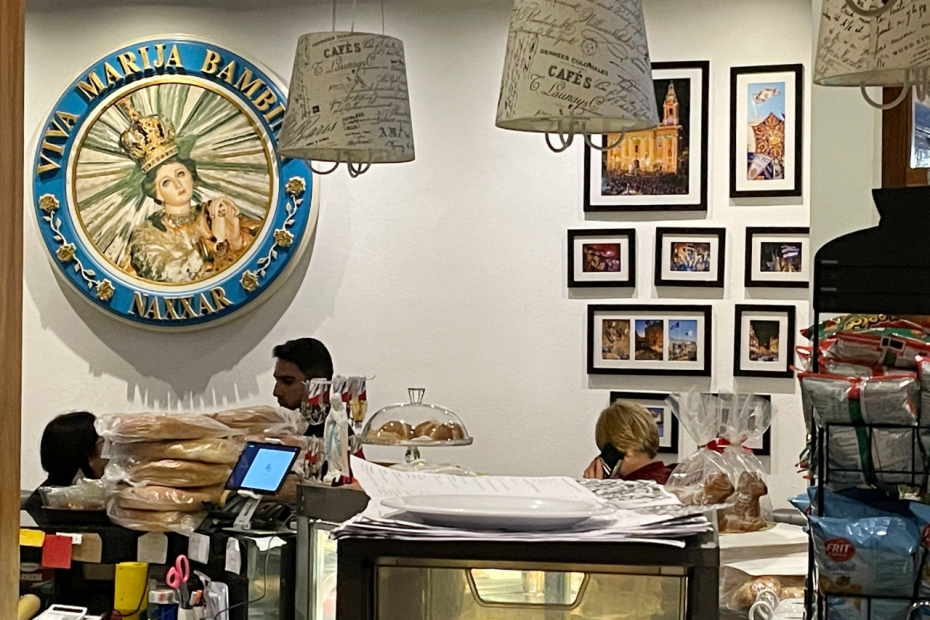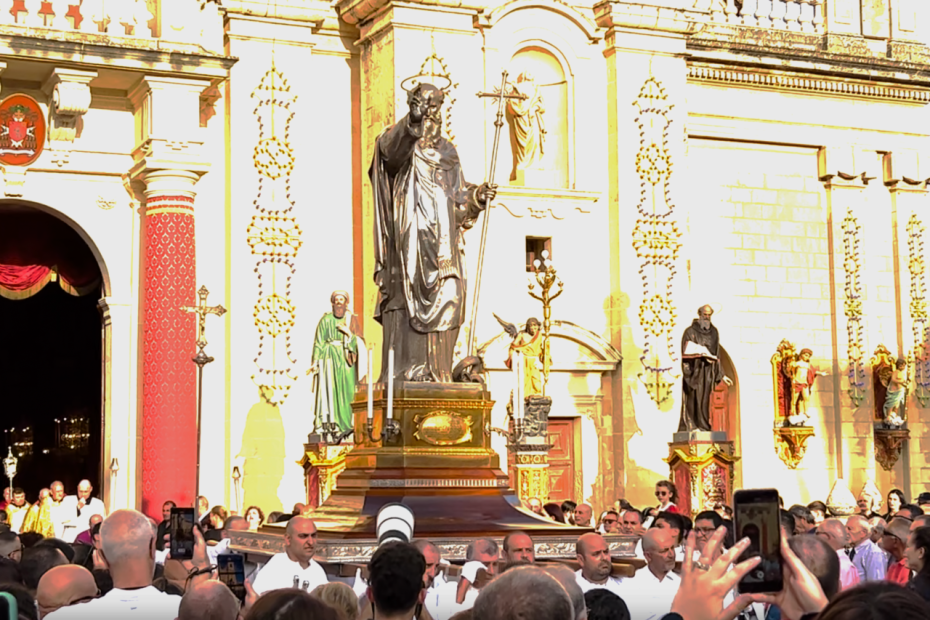In one sense, Mary and the saints are ubiquitous in Malta. Their names are found along streets on small signs that identify houses and as namesakes of hospitals, clubs, and even political organizations. Six Marian or saints’ days are public holidays nationwide: the feasts of St. Paul's Shipwreck, St. Joseph, St. Peter and St. Paul, the Assumption, Our Lady of Victories, and the Immaculate Conception. The grandest and most important social event of the year in any village is its feast[link] in honor of the town’s patron saint. Many villages have more than one feast, and at those feasts, the loyalty shown to one saint over another can take on tremendous importance, at least temporarily, and become a cause of division or rancor in the village.
Given all that, Malta would seem to be a place where the saints would exercise a great deal of power over Catholics, whether they were appealed to as intermediaries, patron-protectors, miracle workers, or role models. A couple of anecdotes from older interviewees suggested that at one time, some village Maltese shaped their bricolage faiths around Catholic saints. But at least in interviews for this project, it was hard to determine what real role saints have in Catholics’ lives today.1
There was evidence that the Virgin Mary occupies a special place in many Maltese hearts. As Catholics & Cultures’ account of Holy Week[link] indicates, the week begins, for all practical purposes, on the Friday before Palm Sunday, celebrated in Malta as the feast of Our Lady of Sorrows. That evening, in Valletta and twenty other parishes on the islands, crowds processed through the streets reflecting on the sorrowful mysteries of the Rosary and launching Holy Week from the vantage point of Mary’s sorrow. Maltese, several interviewees related, resonate especially with the suffering that she endured as a mother.
One woman reported, “People used to pray to the saints first, and there are still some [who do]. I like the saints and the feasts, because it’s our culture. But I pray to Holy Mary and to God.” One man reported, “People stop in the church, say hello to Mary first. The priest used to say, ‘You are doing it wrong. You should first say hello to Jesus, then go to the Virgin Mary’… For us, it’s more important to go to Mary. Even the [parish] church is dedicated to her.” Interviewees spoke of ways that they found her to be relational and a source of comfort. Unless prompted about Mary, younger interviewees were a bit different. When asked about who they prayed to, they named God or Jesus—or both.
Celebrated in Feasts, Absent in Interviews
While Mary was discussed in interviews, other saints were largely absent. St. Paul, who was shipwrecked in Malta and who, at least symbolically, is regarded as the founder of the Church here, was never actually mentioned, except in reference to Malta’s history. One exception, St. George Preca, founder of the Society of Christian Doctrine[link-lay] and the only Maltese-born saint, was highlighted as a model by that group’s members and is certainly known on the islands.
But outside of the discussion of parish feasts, the saints were absent. Even when prompted, no one admitted to turning to the saints in prayer in the hope of miracles. All the Maltese lay conversants who were asked dismissed the idea that a person gets anything back–not miracles, not protection–from a saint in return for a person’s respect and devotion. Most admitted, hesitantly, that the saints had no significant role for them. Thinking about the question, one interviewee noted, “Children are rarely named after saints now. Families want something original.” Others suggested paying attention to the fact that the tradition of honoring saints by identifying houses with their name, rather than a family name, is notably more common on older homes than in newer developments, where one can almost as often see secular house phrases like Aloha or just a number.
This is a startling outcome for a country whose core cultural, and most attended, religious events–the festas–honor saints.
As the accompanying Catholics & Cultures article on those feasts explores in more detail[link] through the example of the feast of San Filippo d’Agira at Żebbuġ, a village feast is organized around a procession of the village’s patron saint through the streets. The streets are elegantly decorated, bands accompany the processions, and fireworks fill the air. The clubs formed to prepare and augment the feasts are usually the most important associations[link] in town. Wherever there are two feasts in town, a powerful spirit of rivalry between the clubs rises to make sure that one club’s saints are better honored than the other club’s.
As that article recounts, the saints are often not treated in the way that many outsiders might assume, given all that goes into the celebration. Asked at the feast whether people prayed to San Filippo, thought of him as a protector-patron of the village, or imagined him as a role model or a figure who could secure miracles, one man in his twenties, a self-described weekly Mass-goer, grinned at the question: “No one prays to the saint. He’s not for that. He’s more like the town hero.” Another interviewee reported that it was most appropriate to compare the competing saints to team mascots, highly defended by one team against another, in a Malta that is often divided into competing teams.
At the feasts, it may be best to think of the saints as totems, in the sense that the sociologist Emile Durkheim used the phrase, as markers or embodiments of a particular clan.2 In Durkheim’s framework, totems were ascribed supernatural powers, but for the feasts at the festa, those powers are fairly obscure, despite the rituals in the church to honor them. The feasts’ saints are held sacred in the sense that desecration or disrespect of them would bring real consequences. But how they are sacred in the traditional Christian sense, as intermediaries, patron-protectors, miracle workers, or role models, is much harder to say. In the villages, they are patrons, but not in the sense that they are people who actually mediate for us and who need to be respected lest they be displeased or withhold protection.
The anecdote above, “You should first say hello to Jesus, then go to the Virgin Mary,” points to a deliberate effort in the Church since Vatican II to recenter attention on Jesus. The Council’s reformist sensibility would certainly support a thoroughly Christocentric approach. Right now, insofar as Catholicism does thrive in Malta, it seems to do so with overlapping sensibilities, one more Christocentric and another, a legacy, more Marian and ritually saint-centered.
